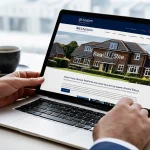The Role of Sustainable Practices in UK Property Finance
Sustainable property finance is rapidly becoming a critical factor in the UK real estate market. With increasing awareness of environmental impacts, eco-friendly practices are no longer optional but essential. Sustainable property finance involves funding developments and renovations that prioritize energy efficiency, reduced carbon footprints, and responsible resource management.
In UK real estate, sustainability manifests through the integration of renewable energy systems, advanced insulation, and materials sourced with minimal environmental harm. These eco-friendly practices improve property value and attractiveness to investors who emphasize long-term benefits over short-term gains. Financial institutions are adapting by offering incentives like green mortgages and lower interest rates for properties that meet sustainability criteria.
Also to discover : How Can UK Property Financing Evolve to Meet Future Challenges?
The financial side of sustainable development ties directly to risk reduction and cost savings. Properties designed with sustainability in mind tend to have lower running costs due to energy efficiency, enhancing their appeal and marketability. Sustainable property finance in the UK also aligns with government targets for carbon neutrality, making it a strategic focus for developers and lenders alike.
Understanding how sustainable property finance operates helps stakeholders make informed decisions that benefit both the environment and the financial bottom line in the evolving UK real estate landscape.
Also to read : How Can Emerging Virtual Reality Technologies Impact Property Financing in the UK?
Impact of Sustainability on Property Values
Sustainability has become a key factor influencing property values in today’s real estate market. Properties equipped with energy efficiency measures and classified as green buildings often command higher market prices compared to their conventional counterparts. This trend reflects growing consumer demand for environmentally responsible homes and commercial spaces that offer lower operating costs and reduced environmental footprints.
Studies have shown that homes featuring sustainable attributes such as high-performance insulation, solar panels, and efficient HVAC systems can achieve a price premium. This premium stems from buyers’ willingness to invest upfront for long-term savings on energy bills and the positive impact on comfort and health. Commercial real estate also benefits, as tenants increasingly prioritize green certifications—for instance, LEED or BREEAM—which correlate with higher rental rates and occupancy.
Recent data highlights that green properties can yield a price increase of 5 to 10% over comparable traditional properties. Additionally, properties with superior energy efficiency ratings tend to experience faster sales cycles, demonstrating market preference for sustainability. Investors recognize that eco-friendly buildings not only reduce operating expenses but also align with evolving regulatory standards and corporate social responsibility goals, boosting their long-term value.
Thus, incorporating sustainable features is not merely an ethical choice but a financially sound strategy that enhances property values. Homebuyers and investors alike are advised to consider these attributes when assessing market opportunities.
Mortgage Rates and Sustainable Homes
Green mortgages in the UK are increasingly available as lenders respond to growing demand for sustainable homes. These specialized mortgages often come with more favorable mortgage rates compared to traditional loans. The key criterion influencing these rates is the property’s Energy Performance Certificate (EPC) rating. Homes with a high EPC rating, indicating superior energy efficiency, tend to qualify for lower interest rates. This financial incentive encourages buyers to consider energy-efficient properties.
Lenders base their mortgage rates partly on the reduced risk and potential long-term savings associated with sustainable homes. Properties with excellent EPC ratings often have lower running costs, making borrowers less likely to default. Additionally, some lenders offer explicit incentives for homes meeting specific green standards, such as subsidized fees or cashback offers. Several prominent UK banks and building societies now market green mortgages, recognizing the dual benefit of supporting environmental goals while attracting customers looking for lower mortgage rates on energy-efficient homes.
By focusing on energy performance certificates and prioritizing properties with high sustainability standards, green mortgages provide practical advantages for buyers prioritizing both eco-friendliness and cost savings.
Government Incentives and Regulatory Landscape
Understanding the government incentives available is crucial for anyone interested in eco-friendly property development or purchasing sustainable homes in the UK. The government actively promotes green building through various grants for eco-properties designed to reduce environmental impact and enhance energy efficiency.
The UK property regulation framework now includes several mandates that encourage or require sustainable construction practices. These regulations target everything from insulation standards to the use of renewable energy sources in new builds and renovations. Adhering to these rules not only ensures compliance but can also enhance property value and appeal.
Significant grants for eco-properties are accessible to both developers and buyers, offering financial support that offsets the higher initial costs often associated with sustainable materials and technologies. These grants can include tax reliefs, subsidies for solar panel installations, and funding for energy-efficient heating systems.
By leveraging these government incentives within the context of evolving UK property regulation, stakeholders can make informed decisions that benefit both the environment and their financial interests.
Financing Options for Sustainable Development
When exploring property finance options for sustainable development, developers and investors have access to various specialized loans and funding avenues tailored to green projects. These sustainable development loans often feature favorable interest rates and flexible terms to encourage environmentally responsible construction and renovation.
One prominent type of loan is the green mortgage, designed specifically for properties that meet certain energy efficiency standards. Additionally, there are government-backed incentives and grants that complement private financing, easing capital constraints for eco-friendly projects. Investors can leverage these options to both reduce upfront costs and enhance long-term returns by contributing to sustainable infrastructure.
Accessing these property finance options typically requires submitting detailed sustainability plans and certifications, proving the project’s environmental impact. Financial institutions prioritize loans based on the expected efficiency gains and potential for reduced carbon footprints. By choosing the right combination of sustainable development loans, developers can secure necessary investment while promoting green building practices in the industry.
Practical Implications for Buyers, Investors, and Developers
When property buyers focus on sustainable homes, their priorities shift beyond aesthetics and location to long-term value and environmental impact. Buyers should assess factors such as energy efficiency ratings, use of eco-friendly materials, and potential savings on utilities. Recognising the importance of sustainability can lead to healthier living spaces and reduced operating costs, making these homes a wise investment.
For investors and developers, financial viability and the risk profile of sustainable projects are critical. Carefully analysing market demand, regulatory incentives, and projected returns ensures sound sustainable finance decisions. Investors need to probe documentation on certifications and compliance, while developers must integrate sustainability into project design and construction to enhance appeal and secure funding.
Market trends reveal that properties with strong sustainability credentials often benefit from faster sales and higher prices. Best practices include employing green building standards, leveraging government incentives, and transparently communicating the benefits of sustainable features to stakeholders. These strategies help underline the growing demand, guiding buyers, investors, and developers toward more informed and responsible choices in today’s real estate market.

